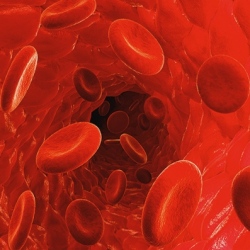
Researchers have created the first self-propelled particles capable of delivering coagulants against the flow of blood to treat severe bleeding, a potentially huge advancement in trauma care. Traditional methods of halting severe bleeding are not very effective when the blood loss originates inside the body.
"People have developed hundreds of agents that can clot blood but the issue is that it’s hard to push these therapies against severe blood flow, especially far enough upstream to reach the leaking vessels. Here, for the first time, we’ve come up with an agent that can do that,".
A group of researchers, biochemical engineers and emergency physicians developed simple, gas-generating calcium carbonate micro-particles that can be applied in powder form to stop critical bleeding. The particles work by releasing carbon dioxide gas, like antacid tablets, to propel them toward the source of bleeding.
The carbonate forms porous micro particles that can bind with a clotting agent known as tranexamic acid, and transport it through wounds and deep into the damaged tissue.
After studying and modeling the movement of the particles in vitro, the researchers confirmed their results using two animal models. Even in a scenario that mimicked a catastrophic event like a gunshot wound to a femoral artery, the particles proved highly effective in stopping the bleeding.
While much more rigorous testing and development is needed to bring the agent to market, the particles could have a wide range of uses, from sinus operations to treating combat wounds.
